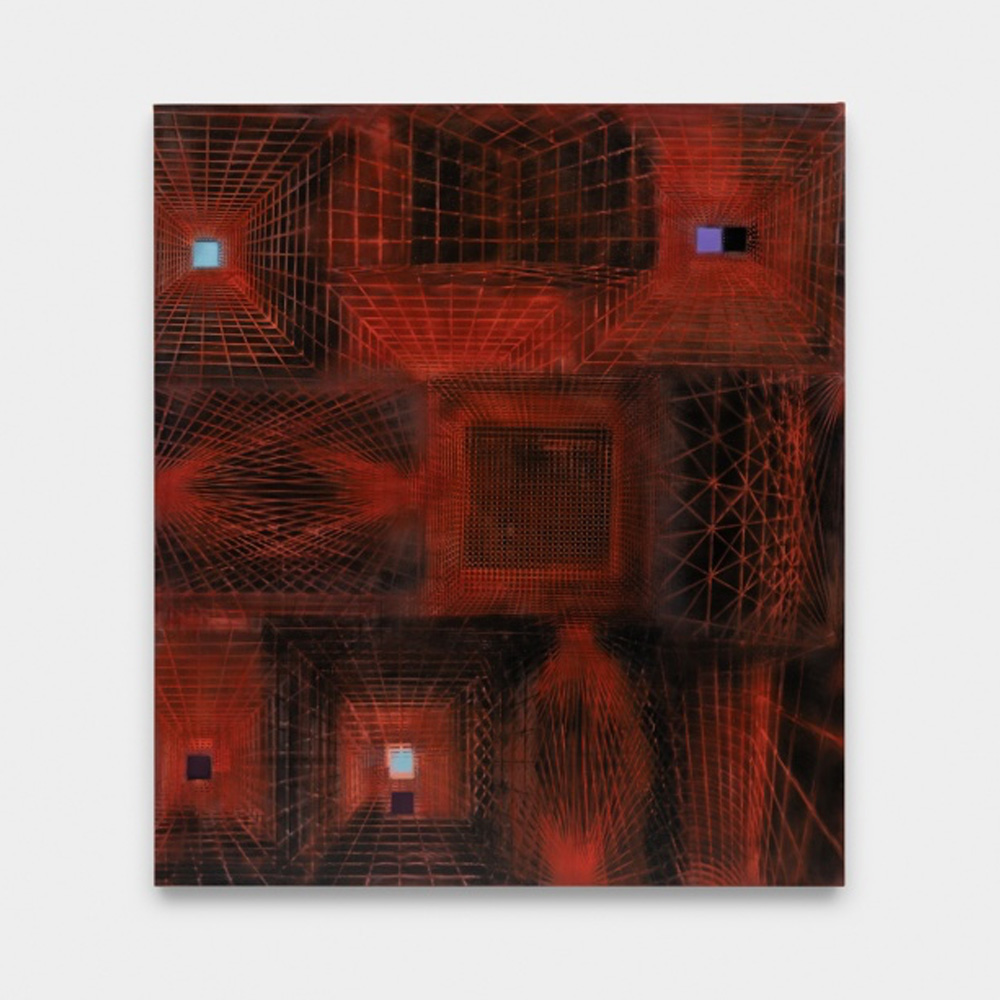marco giannotti_através
feb 09 - mar 23_2019

In Através, the artist Marco Giannotti (São Paulo, SP – 1966) brings together paintings and reliefs that deal with the relationship between drawing and color in Western painting since the Renaissance. Curated by Agnaldo Farias, the show features an unprecedented set of around 20 works in which Giannotti uses perspective schemes in contrast to a varied chromatic range, applied in various techniques such as oil painting, tempera and enamel with graffiti. Perspective indicates a way of seeing and rebuilding a city. “At the present time, several perspectives can be launched with new technologies: Through it is the place where the artist gives place to his imagination”, says Giannotti. For him, the spaces allude to fragments of ideal or utopian cities, sometimes labyrinthine and timeless. “The projective dimension of the works thus opens up possibilities to reflect on the place of painting in the contemporary world, where more and more virtual space overlaps real space”, he concludes.
According to Agnaldo Farias, “These paintings by Giannotti are in tune with this orientation: they are taken by twisted meshes, aerial architectures, tunnels related to digital graphic constructions, tapering towards small square escape areas, modules retracted to a small scale in virtue of distance; there are also, in more radical cases, canvases composed of divergent compositions, some based on counterpoints of perspectives, others on misaligned overlaps, all unstable, restless, noisy products”, completes the curator.
In addition to being an artist, a teacher, and a translator, Giannotti’s work reflects his nature as a scholar and researcher. In this series of works that make up the exhibition Via, he focused on the studio of Urbino and Gubbio, where important studies of perspectives and philosophy in the Italian Renaissance were carried out. In his previous exhibition at Galeria Raquel Arnaud, Penumbra, he investigated the transition point between light and shadow, taking up issues present in his master’s degree in philosophy, when he partially translated Goethe’s Doctrine of Colors, and poring over the work In praise Shadow, by Junichiro Tanizaki. In Diários de Kyoto, a solo show held at Instituto Tomie Ohtake in 2013, the delicate collages on washi paper were based on his travel notebook, conceived during his stay in the city, in 2011, when, at the same time he taught classes at the University of Foreign Studies in Kyoto, delved into Japanese culture.

